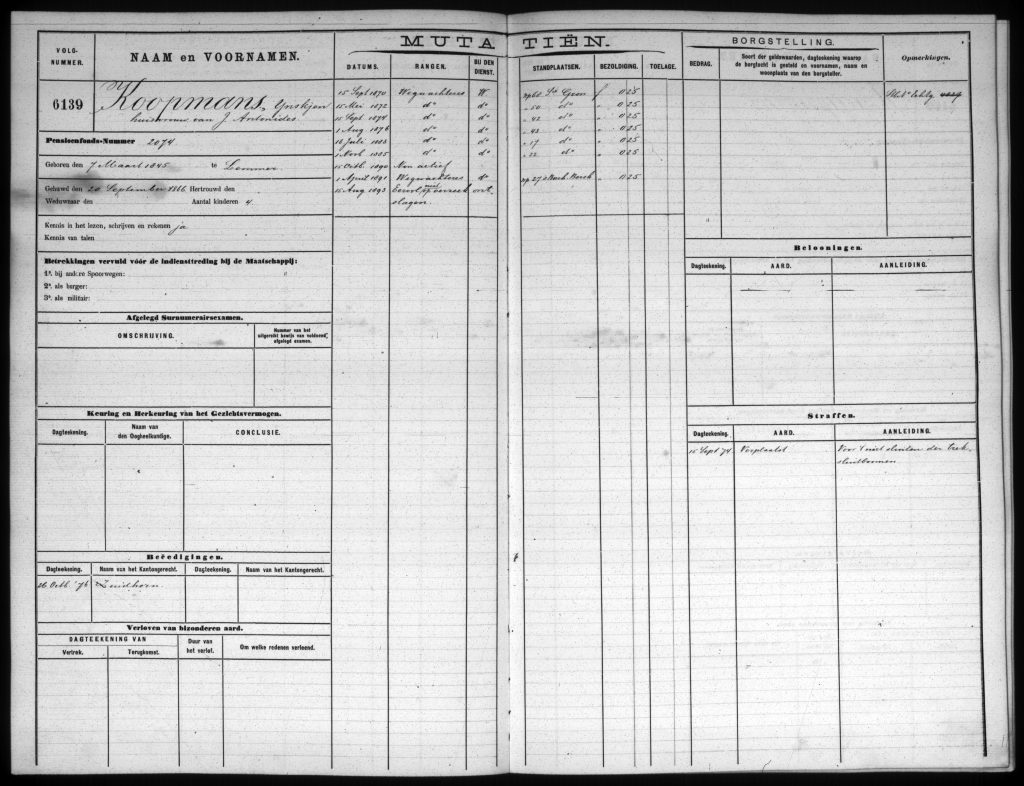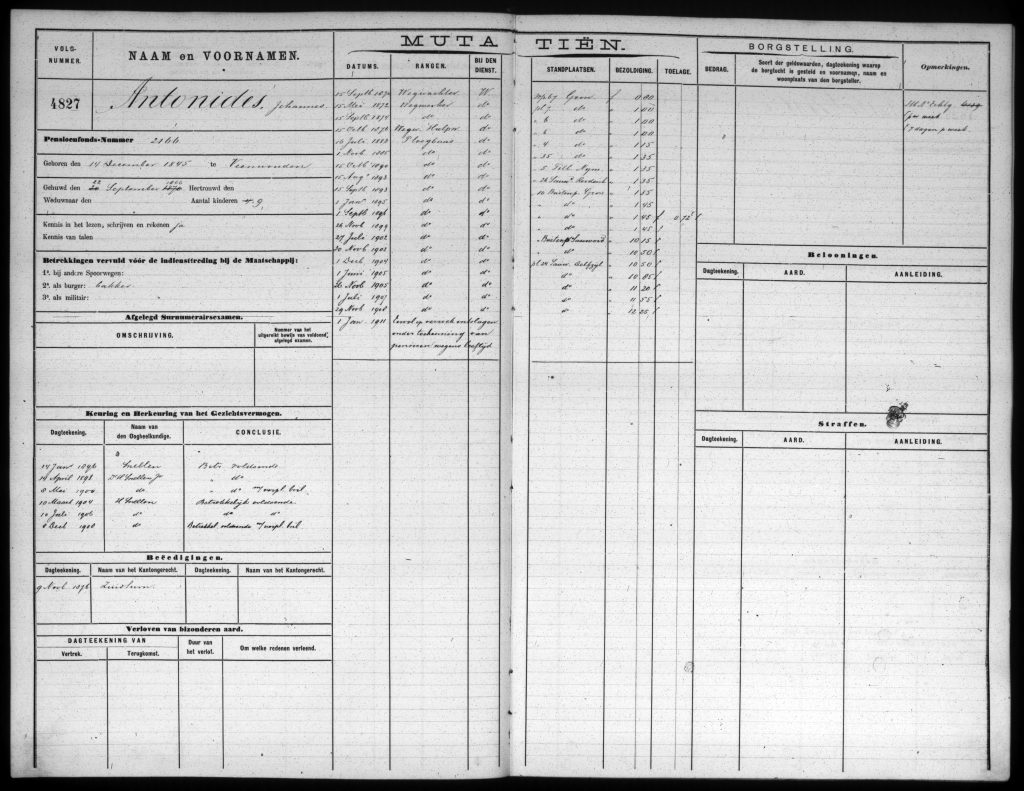My father always told that his mother, Lijsbeth Antonides, was born in Oosthem, a small place south of Sneek. Her parents, Johannes and IJnskjen, worked for the State Railways. Along the railways, there were road workers who daily inspected the tracks. The workers lived in watch houses along the railway line, with their wives appointed as crossing wardens. Johannes worked as the foreman of the road workers, while IJnskjen was the crossing warden. They were regularly transferred.
Cousin Wiebe Antonides: Johannes Antonides and Ynskje Koopmans. It is often said that two opposites attract each other and feel drawn to one another. However, I believe that our grandparents differed greatly in character and mannerisms. Grandfather was calm and serene, a man who might have inscribed above his house the motto of Prince William 1: “Saevis tranquillus in undis”: Calm amidst the raging waves, in contrast to the motto above grandmother’s house: “Repos Ailleurs”: Rest elsewhere.
Grandmother could not find peace in the place where she had moved, leading to a near-constant cycle of relocating. To Drachten, Harlingen, Vierverlaten, Buitenpost, Oosthem, Grijpskerk, Veenwouden, Wolpheze, etc. No, this must not have always been easy for Grandfather, yet it seems he could not resist this drive to move. “Beppe” was not particularly timid, and she saw no issue in personally approaching the Inspector of Railways to convince him of the necessity to leave, and it mostly seemed to succeed. There are those who seem born to travel, and perhaps grandmother inherited this urge from her upbringing.
In 1890, they lived at Wachtpost 22 along the line from Leeuwarden to Stavoren, at the intersection with Pykedijk in Oosthem. Their daughter Lijsbeth was born there. Later, their son Auke also lived there.
Cousin Wiebe Antonides shares this:
The trains naturally passed right by our house. We were used to it, but some visitors were sometimes quite startled. There was fairly busy traffic at that spot by Wachtpost 22 on the road from Sneek via Nijezijl to Oudega and Blauwhuis and beyond. The waterway that connected the Wymerts on one side and Piekerneer and Oudegaster-brekken on the other side was still navigable for small boats during our youth. The watchpost – demolished in 1962 for some years – is still very vivid in our memories. For instance, when we came home from school, we would jump across the tracks, then go around to the large windows of the living room, which overlooked the wide polder, with the outlines of the village Heeg visible in the distance. Next to the front door, which led to the attic and the living room, stood a round railway clock in the shape of a miniature water tower. This clock alerted our parents when a train was approaching. Sometimes, after so many years, I still hear that peculiar sound, that warning signal.
Work History
The Utrecht Archive also holds the records of the NS and its predecessors. There, too, are the personnel files of Johannes and IJnskjen. IJnskjen earned a quarter a day and was transferred in 1874 as punishment for failing to close the crossing gates in time.


Discover more from Schoonveld Family
Subscribe to get the latest posts sent to your email.

